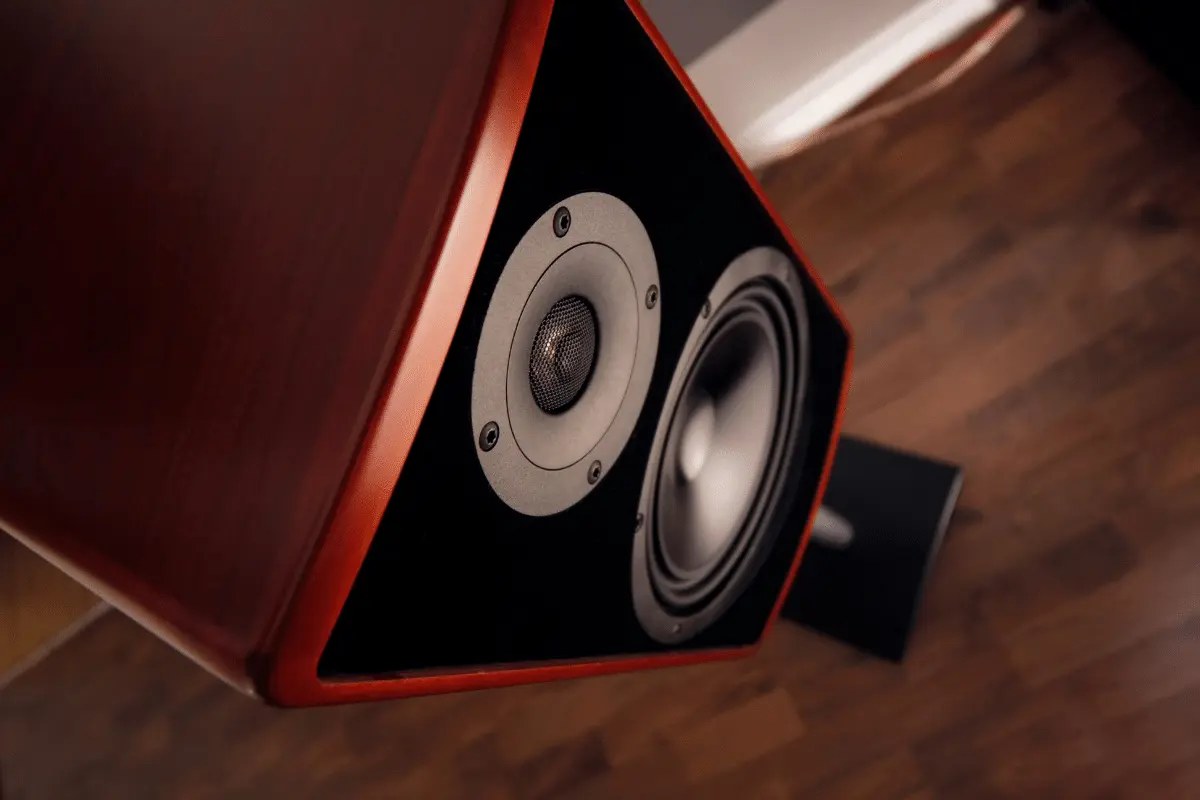Welcome, fellow enthusiasts and seekers of auditory bliss! Today, we embark on a journey to explore the world of bone conduction headphones and their remarkable ability to deliver audio in even the noisiest of environments.
Picture this: you’re strolling through a bustling city street or cycling along a busy road, craving some sweet tunes to accompany your adventures.
But wait, how can you enjoy music without compromising your safety or situational awareness? Fear not, for bone conduction headphones are here to save the day!
Definition of Bone Conduction Headphones
Now, let’s grasp the essence of these magical devices that defy traditional audio transmission methods. Bone conduction headphones are a marvel of modern technology that allow sound waves to bypass your eardrums entirely.
Instead of relying on conventional speakers or earbuds nestled in your ears, they utilize bone conduction technology to transmit sound vibrations directly into your inner ear through cranial bones. You might be wondering: “How is this sorcery possible?” Well, let me shed some light on the matter.
Explanation of How They Work
The key concept behind bone conduction headphones lies in their ability to exploit our natural hearing mechanisms. When sound waves travel through the air and reach our ears, they typically enter through our ear canals and vibrate our eardrums. However, bone conduction takes an alternative route by harnessing the vibrations created by auditory signals.
To elaborate further, bone conduction headphones feature transducers that convert audio signals into mechanical vibrations. These vibrations are then transmitted directly into our skull’s temporal bones (located near our ears), which act as natural resonators.
As these vibrations propagate through the bones surrounding our cochlea (the organ responsible for processing sound), they stimulate it just as sound waves would. This ingenious process bypasses the need for our eardrums altogether, allowing us to perceive sound with unparalleled clarity, even amidst the chaos of a raucous cityscape or a cacophonous construction site.
The Benefits of Bone Conduction Headphones in Loud Environments
Ability to hear external sounds while listening to music
Picture this: you’re jogging through a bustling city street, the honking of cars, chattering pedestrians, and the general buzz of urban life enveloping you. You want to enjoy your favorite tunes but don’t want to compromise your safety. This is where bone conduction headphones come to the rescue!
Unlike traditional headphones that cover or block your ear canals, bone conduction headphones transmit sound through vibrations directly into your cheekbones or jawbone. This unique mechanism allows you to keep an ear open to what’s happening around you while still enjoying your music.
You can groove along with your favorite beats and simultaneously be aware of approaching traffic, a siren wailing in the distance, or even someone calling out for help. It’s like having an invisible companion who keeps you connected to both worlds – the musical realm and the reality around you.
Enhanced situational awareness for outdoor activities
For outdoor enthusiasts, bone conduction headphones are a game-changer! Whether it’s hiking in the wilderness or cycling on busy trails, being aware of your surroundings is crucial for safety.
Traditional headphones tend to isolate you from ambient sounds since they block out external noise entirely. In contrast, bone conduction technology takes a different approach by bypassing your ear canals and transmitting sound directly into your inner ears via vibrations on bones in proximity to them.
This means that while exploring nature’s beauty or zooming down a trail on your bike, bone conduction headphones allow you to stay alert and attuned to environmental cues such as birds chirping, rustling leaves, or even warning calls from fellow adventurers. It adds an immersive touch to outdoor activities without compromising safety – keeping you in harmony with both Mother Nature and music.
Safer option for runners and cyclists on busy streets
We all know the importance of staying focused and aware when running or cycling on busy streets. Bone conduction headphones offer a safer alternative by allowing you to enjoy your favorite tunes without completely blocking out the auditory landscape.
With these headphones, you can still hear approaching vehicles, sirens, or even someone shouting a warning. This enhanced situational awareness can be truly lifesaving in high-traffic areas where split-second decisions are crucial.
Runners can maintain their rhythm while being attentive to potential hazards, and cyclists can pedal confidently while keeping an ear out for any unexpected surprises on the road. Bone conduction technology empowers athletes to find their rhythm without sacrificing safety – it’s like having a personal soundtrack that adapts seamlessly to your surroundings.
So, whether you’re an urban explorer, nature lover, or fitness enthusiast, bone conduction headphones provide a unique and valuable experience by allowing you to savor music while staying connected with the world around you. They offer the best of both worlds – an immersive audio experience coupled with enhanced situational awareness that is invaluable in loud environments.
Vibrations and their Transmission in the Skull
One of the key aspects of bone conduction headphones is their ability to transmit sound through vibrations directly to our skull. When we listen to music or any audio content using these headphones, the transducers situated on both sides of the headset create tiny vibrations that travel through our cheekbones and jawbones. These vibrations then make their way to our cochlea, which is a spiral-shaped cavity located deep within the temporal bones.
Overview of Bone Conduction Technology
Bone conduction technology may seem like something out of a sci-fi movie, but it has actually been around for quite some time. Initially developed for individuals with hearing impairments, bone conduction technology has evolved to cater to various audio-related applications. In bone conduction headphones, small transducers convert electrical signals into vibrations.
These vibrations are then directly transmitted through our bones, bypassing the traditional pathway through the ear canal and eardrum. This innovative technology allows us to perceive sound without obstructing external noise or interfering with our natural auditory process.
Role of Temporal Bones and Cochlea in Sound Perception
The temporal bones play a crucial role in sound perception when using bone conduction headphones. Located at each side of the skull above our ears, these sturdy bones protect delicate structures within our ears while acting as conductive pathways for sound waves.
Within the temporal bones lies the cochlea, a snail-shaped structure responsible for converting mechanical vibrations into electrical impulses that can be interpreted by our brain as sound. When wearing bone conduction headphones, the vibrations generated by the transducers resonate with these bony structures and stimulate nerve fibers connected to the cochlea.
This unique method allows us to hear sounds without relying solely on air-conducted audio waves. While traditional headphones route sound through air-filled ear canals, bone conduction bypasses this step, resulting in a different auditory experience that enhances situational awareness.
Noise Isolation vs Noise Cancellation: Understanding the Difference
The Battle for Silence: Two Different Approaches
When it comes to finding solace in a noisy world, there are two main contenders in the audio realm: noise isolation and noise cancellation. While these terms may seem interchangeable, they actually represent distinct methods of combating ambient sounds.
Noise isolation primarily relies on physical barriers to block out external noises, whereas noise cancellation employs advanced technology to actively counteract unwanted sounds. Understanding the difference between these approaches is crucial in evaluating the effectiveness of bone conduction headphones in loud environments.
Noise Isolation with Bone Conduction Headphones: Cutting Through the Clamor
In the realm of bone conduction headphones, noise isolation is achieved through a rather innovative mechanism. Rather than attempting to block out external noises through passive means like traditional headphones, bone conduction headphones work by bypassing your ear canals altogether.
They transmit sound waves as vibrations directly into your skull through specialized transducers placed on your cheekbones or temples. This unique approach allows you to enjoy audio while still being aware of your surroundings—a feature highly advantageous in environments where auditory vigilance is crucial.
However, it should be noted that while bone conduction headphones provide a form of noise isolation, they do have limitations when dealing with loud external noises. Since these headphones do not form an acoustic seal around your ears like traditional options do, sudden bursts of high-decibel environments might still penetrate through and disrupt your listening experience.
Despite this drawback, bone conduction headphones remain an excellent choice for those seeking a balance between enjoying their favorite tunes and staying alert in noisy surroundings. Remember that effective communication involves both verbal and non-verbal cues
Considerations for Choosing Bone Conduction Headphones for Loud Environments
Durability and Build Quality
When it comes to bone conduction headphones, durability is a crucial factor to consider, especially if you plan to use them in loud and rugged environments. Look for headphones that are crafted from high-quality materials such as sturdy metals or reinforced plastics. These materials not only provide structural integrity but also ensure longevity, allowing your headphones to withstand the rigors of daily use.
Materials used in Construction
The materials used in the construction of bone conduction headphones play a significant role in their performance. Look for headphones with transducers made from advanced alloys or composite materials designed to optimize sound transmission efficiency.
Additionally, consider the comfort factor by selecting models with soft silicone or rubberized pads that sit against your cheekbones. This will enhance comfort during extended wear and ensure a snug fit.
Water and Sweat Resistance Features
If you intend to use bone conduction headphones in loud environments where perspiration or water exposure is likely, it’s wise to choose a pair with water- and sweat-resistant features. Look for an IPX rating that guarantees protection against moisture ingress while allowing you to focus on your activities without worrying about damaging your beloved headphones.
Tips for Optimal Performance in Noisy Settings
Proper Placement on the Head for Optimal Sound Transmission
To maximize sound transmission while using bone conduction headphones in noisy environments, proper placement is key. Ensure that the transducers are positioned directly over your temporal bones, which are located just in front of each ear canal opening. Placing them correctly allows vibrations to be efficiently transmitted through the skull bones, optimizing audio quality even amidst external noise.
- Positioning over Temporal Bones: Gently position the transducers on the temporal bones, avoiding any interference from hair or other obstacles.
This placement ensures that vibrations have a clear path through the bone structure for optimal sound transmission.
- Adjusting Tightness to Ensure Good Contact: It’s important to find the right balance of tightness when wearing bone conduction headphones.
Adjust them so they are snug against your cheekbones, ensuring good contact without causing discomfort. This allows for improved audio clarity and prevents sound leakage.
Limitations of Bone Conduction Headphones in Loud Environments
Decreased Audio Quality Compared to Traditional Headphones
While bone conduction headphones offer unique benefits, it’s essential to acknowledge their limitations. One such limitation is a decrease in audio quality compared to traditional headphones. Due to the absence of ear canal resonance, these headphones tend to lack deep bass frequencies, resulting in a potentially less immersive listening experience.
- Loss of Bass Frequencies due to Lack of Ear Canal Resonance: The absence of direct sound waves entering the ear canal can lead to a loss of lower frequencies typically enjoyed with traditional headphones.
If deep bass is crucial for your audio preferences, you may need to consider alternative options.
- Reduced Overall Volume due to Sound Leakage: Another limitation stems from sound leakage caused by bone conduction technology.
As vibrations are transmitted through the skull bones, some sound may escape into the external environment rather than being confined within your ears. Consequently, this can result in reduced overall volume levels and potential loss of detail.
Safety Considerations when Using Bone Conduction Headphones in Loud Environments
(No specific content provided)
Conclusion
Bone conduction headphones offer unique advantages for individuals seeking to enjoy their favorite audio content in loud environments. When choosing a pair, prioritize durability and build quality to ensure they can withstand the demands of your activities.
Look for materials that optimize sound transmission, such as advanced alloys or composite materials. Additionally, consider water and sweat resistance features to maintain functionality even during intense workouts or outdoor adventures.
To enhance performance in noisy settings, proper placement of the headphones on your temporal bones is crucial. This ensures optimal sound transmission and clarity.
Adjust the tightness to achieve a comfortable yet secure fit for an immersive experience. However, it’s important to acknowledge the limitations of bone conduction technology, such as decreased audio quality compared to traditional headphones due to the lack of ear canal resonance and potential sound leakage resulting in reduced overall volume.
Despite these limitations, bone conduction headphones provide a practical solution for those desiring situational awareness while enjoying their audio content in loud environments. So go ahead and embrace this innovative technology while relishing the best of both worlds – outstanding sound awareness combined with an immersive listening experience!





Leave a Reply
You must be logged in to post a comment.